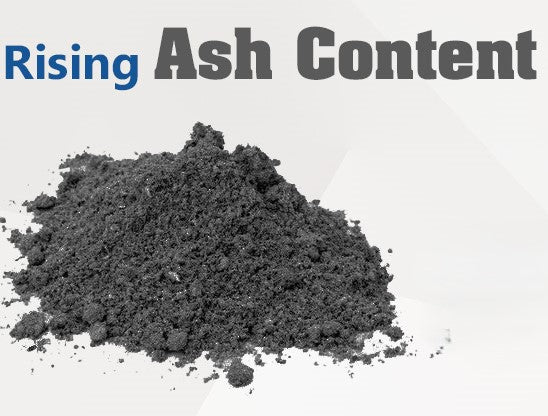
Understanding Ash in Food: What It Is and Why It Matters
Share
What Is Ash in Food?
Ash refers to the inorganic mineral residue that remains after food is completely burned or incinerated at very high temperatures (usually around 500–600°C). This residue is composed of the minerals naturally present in the food, such as:
Calcium
Potassium
Magnesium
Sodium
Iron
Phosphorus
Trace elements like zinc and copper
Because organic compounds (like fats, carbohydrates, and proteins) burn off, what’s left behind — the ash — represents the total mineral content of that food.
Why Measure Ash in Food?
Ash content gives nutritionists, food scientists, and manufacturers useful information about the mineral composition and overall quality of food. Here are some key reasons why ash analysis is important:
Nutritional Assessment: Minerals are essential nutrients for health, involved in bone strength, nerve function, fluid balance, and enzyme activity. Measuring ash helps estimate these mineral levels.
Food Quality & Authenticity: Changes in ash content can indicate adulteration or contamination. For example, adding fillers or excess salts might increase ash unnaturally.
Processing & Cooking Effects: Ash measurement can reveal how cooking or processing affects mineral retention or loss. For instance, boiling vegetables may reduce ash content due to mineral leaching.
Regulatory Compliance: Food labeling often requires mineral content disclosure, and ash helps validate these claims.
How Is Ash Content Measured?
The process is quite scientific:
A weighed food sample is placed in a crucible.
The sample is incinerated in a muffle furnace at high temperature until all organic material is burnt away.
The remaining ash is weighed.
Ash content is usually expressed as a percentage of the original food weight.
Ash in Different Food Types
Grains and Cereals: Typically have moderate ash content, reflecting minerals like phosphorus and magnesium.
Fruits and Vegetables: Usually lower ash content but can vary depending on soil mineral richness.
Meats and Fish: Have ash content from minerals like calcium and iron.
Processed Foods: Ash can indicate added salts or mineral fortification.
Cooking and Ash
Cooking methods influence mineral retention:
Boiling: May reduce ash due to mineral loss in water.
Steaming or Roasting: Generally preserves more minerals.
Frying: Minerals remain, but oil absorption can dilute concentration.
Why Should You Care About Ash in Your Food?
Although you don’t need to measure ash at home, knowing about it helps appreciate the mineral value of your diet. Minerals are vital for:
Strong bones and teeth
Muscle contraction and nerve signaling
Immune system support
Hydration and electrolyte balance
Choosing foods with good mineral profiles supports overall health and wellbeing.
Final Thoughts
Ash content may sound like a niche food science term, but it’s actually a window into the important mineral world hidden inside your food. Next time you enjoy a colorful vegetable, whole grain, or juicy fruit, remember: the “ash” they leave behind tells a story of essential nutrients powering your body every day.
